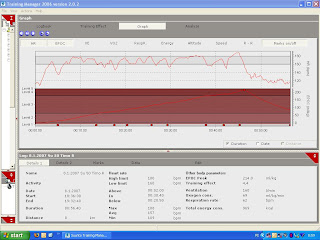Anyway,
Ok, I initially thought I'd avoid any proper preparation for the Saturday comp, but on second thought I decided to rehearse on it as well on this occasion. So here are the main changes to my normal training routine
- Last aerobic training was Monday's relatively hard spinning. I skipped Wednesday running to avoid risking recovery problems.
- Increased stretching; long stretching sessions on Tuesday & Wednesday. Yesterday I worked too late to have any concentration left for stretching.
- Attempting to sleep 15-30 min longer at nights to avoid sleep deficit.
- Eating as if I would be going to run a marathon (less fiber, more easily digested carbon hydrates e.g. pasta and rice) to avoid upsetting my stomach.
I've announced 125m for tomorrow. My plan is to reach 100m as comfortably as possible and with as good a technique as possible, and soon after that start my acceleration phase. I've missed all the opportunities for long dives during the last week because of an upset stomach or crammed-up swimming pools, so I don't have that good an idea on what will happen after that. My guess is that I'll be able to dive 150+ if nothing dramatic goes wrong, but 175 is most likely too much on this attempt.
BTW: If i manage to find an open 'specialty' equipment store today I might be making an unofficial STA WR tomorrow (20min or so)...
Off to diving.



